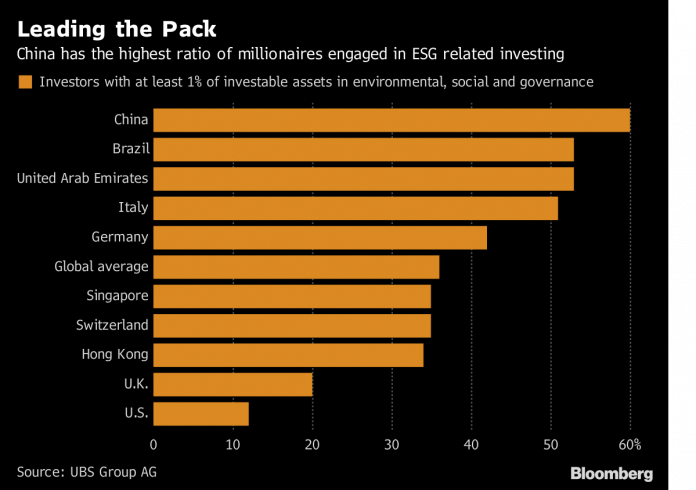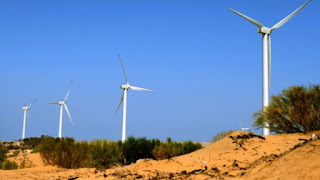This blog is a part of a new series from Climate Reality on the many ways that climate change is impacting human health. Check back often for content on topics like wildfires, heat waves, asthma, and more.
In the wakes of hurricanes Maria, Irma, and Harvey, one question has been hard to escape. Is the climate crisis making weather more extreme?
The simple answer is yes – and it puts the health of millions and millions of people all around the world in jeopardy.
“Within the last three years, when global sea surface temperatures have been at their highest, we have seen the strongest hurricane globally, the strongest hurricane in the northern hemisphere, the strongest hurricane in the southern hemisphere, and the strongest storms in both the Pacific and the open Atlantic.”
Put simply, with more heat energy in the oceans and trapped in the atmosphere thanks to climate change, powerful storms are becoming both more likely and more dangerous.
That danger takes many forms.
According to the World Health Organization, “Climate change is among the greatest health risks of the twenty-first century. Rising temperatures and more extreme weather events cost lives directly, increase transmission and spread of infectious diseases, and undermine the environmental determinants of health, including clean air and water, and sufficient food.”
Hurricanes specifically arrive on shores across the planet with their own unique threats and long-term health consequences. Read on to uncover how climate change adds more fuel to the fire and makes hurricanes even more devastating to our health and well-being.
A VIOLENT STORM
Average global sea surface temperatures are rising, and as sea surface temperatures become warmer, hurricanes can become more powerful. Warmer oceans, and especially warmer water deep in the ocean, can fuel rapid intensification too, so a once-relatively weak tropical storm can cross the right stretch of water and become a major hurricane in a matter of hours.
“For a long time, we’ve understood, based on pretty simple physics, that as you warm the ocean’s surface, you’re going to get more intense hurricanes. Whether you get more hurricanes or fewer hurricanes,
the strongest storms will tend to become stronger,”
Dr. Mann explained.
“Empirical studies show that there’s a roughly 10-mile-per-hour increase in sustained peak winds in Cat 5-level storms for each degree Fahrenheit of warming.”
This can lead to many people, even those who spend their lives in hurricane-prone regions, being under-prepared for the intensity of the actual hurricane that makes landfall, resulting in greater damage, injury, and even loss of life.
But looking at increases in sustained wind speed alone doesn’t paint the full picture of a storm’s destructive potential and its threat to human health. A hurricane is more than just its winds – it’s a major rainfall event accompanied by dangerous storm surge.
To explain this term (and why it’s such a factor in hurricanes),
NOAA identifies storm surge as “the abnormal rise in seawater level during a storm, measured as the height of the water above the normal predicted astronomical tide.” To put it another way, the storm surge is the ocean water pushed into the coast by the force of the hurricane.
At the same time that hurricane winds are getting exponentially stronger, rains associated with them are becoming heavier, and storm surges are higher and moving further inland. More water falls from above and more comes in from the ocean, hitting the coast harder and harder from both directions.
POISONING THE WELL
As the world becomes warmer, more water evaporates from major bodies of water. And when a hurricane travels over ever-warmer sea water, it sucks up more and more water vapor. It then carries this extra moisture and drops some of it as heavy precipitation, sometimes resulting in major flooding when a hurricane makes landfall.
We saw exactly this when Hurricane Harvey came in off the Gulf of Mexico and walloped the Texas coast. The hurricane dropped a staggering 50-plus inches of rain on Houston, Texas, and other areas, a total “as much as 38 percent higher than would be expected in a world that was not warming,”
according to the New York Times.
Just like we saw with Harvey and to a lesser extent with Maria, this onslaught of heavy precipitation can cause massive flooding over a relatively wide geographic area. And other results of climate change – specifically rising seas – can combine to make these floods go from bad to downright terrible.
That’s because with sea levels being higher, there’s more water for hurricanes to push onto the shore. As a result, storm surges are higher and moving further inland – adding even more water to all the precipitation coming down – and lead to more widespread coastal flooding and greater damage.
(The highest-reported storm surge from Hurricane Harvey, recorded in Port Lavaca, Texas, was
7 feet above the mean sea level. Parts of Puerto Rico experienced a 9-foot storm surge with Hurricane Maria!)
In addition to the immediate physical danger presented by the flooding itself, the effects of heavy rainfall and surging sea water can linger long after a storm. All the salty water from the sea can contaminate drinking water supplies directly, and floodwaters often carry chemicals and other run-off pollutants into streams.
These floodwaters can also inundate and ruin agriculture, resulting in long-lasting malnutrition and hunger when damaged farms fail to provide enough crops for the people who rely on them.
Even after the rain stops, floodwaters can take time to recede and an area can remain swamped for some time. This can lead to increases in water-borne infections and diseases like cholera, as well as vector-borne diseases like the West Nile and Zika viruses that are spread by insects like mosquitos that thrive in all that remaining standing water.
INFECTIOUS AND VECTOR-BORNE DISEASES
Vector-borne diseases are illnesses spread by insects like mosquitoes, fleas, mites, or ticks (what scientists call “vectors”). The climate crisis is shifting and growing the geographic areas hospitable to many vectors, changing the scope of disease outbreaks and introducing new illness to places they never previously existed.
And the lingering effects of hurricanes – from pooled standing water to sundry debris – are creating more and more vector-friendly habitats, leaving many regions even more vulnerable to them.
“Vector-borne diseases continue to contribute significantly to the global burden of disease, and cause epidemics that disrupt health security and cause wider socioeconomic impacts around the world,”
the US National Institutes of Health (NIH) reports.
“The simplest connections [between climate change and vectors] are through temperature, affecting the biting, survival and reproductive rates of the vectors, and the survival and development rates of the pathogens that they carry,”
the NIH report continues. “[But] precipitation also exerts a very strong influence, most obviously in the case of diseases transmitted by vectors that have aquatic developmental stages (such as mosquitoes), but also, via humidity, on diseases transmitted by vectors without such stages, such as ticks or sandflies.”
To put this into plain English, in general, warmer temperatures help some disease-carrying vectors to survive and reproduce – and heavy precipitation events like hurricanes can make it even easier.
Some vectors – like mosquitos – need standing water to lay their eggs. Heavy rains and storm surges can leave pools of standing water behind, often during the warmer months of the year, creating ideal conditions for these vectors to reproduce and spread.
That’s not all. Heavy rains and storm surges can also make areas more humid, enabling other vectors – like ticks – that thrive in these conditions to spread farther and faster.
This is a real danger. Ticks are the carriers of Lyme disease,
which has explodedacross the US mid-Atlantic and northeast as temperatures have risen, humidity has increased, and winters have become more mild. And mosquitos are known to carry a range of dangerous diseases, including some very serious illnesses, from dengue fever and chikungunya virus to malaria and even deadly encephalitis.
In addition to diseases and other infections spread by mosquitos and other vectors, cholera, hepatitis A, dysentery, and others can be transmitted directly via contaminated water that pools in areas impacted by flooding....
MORE AT: https://www.climaterealityproject.org/blog/climate-change-and-health-hurricanes?










